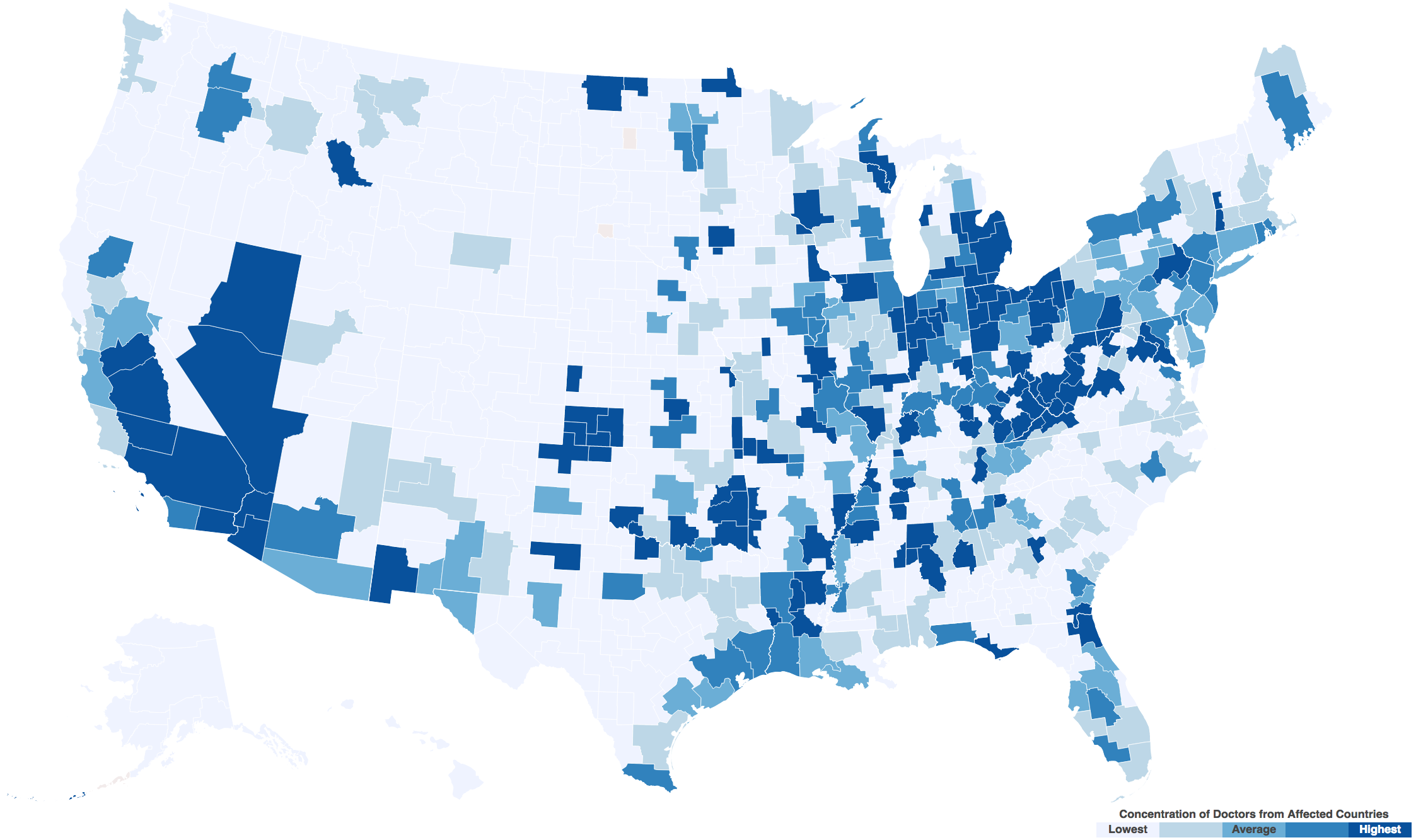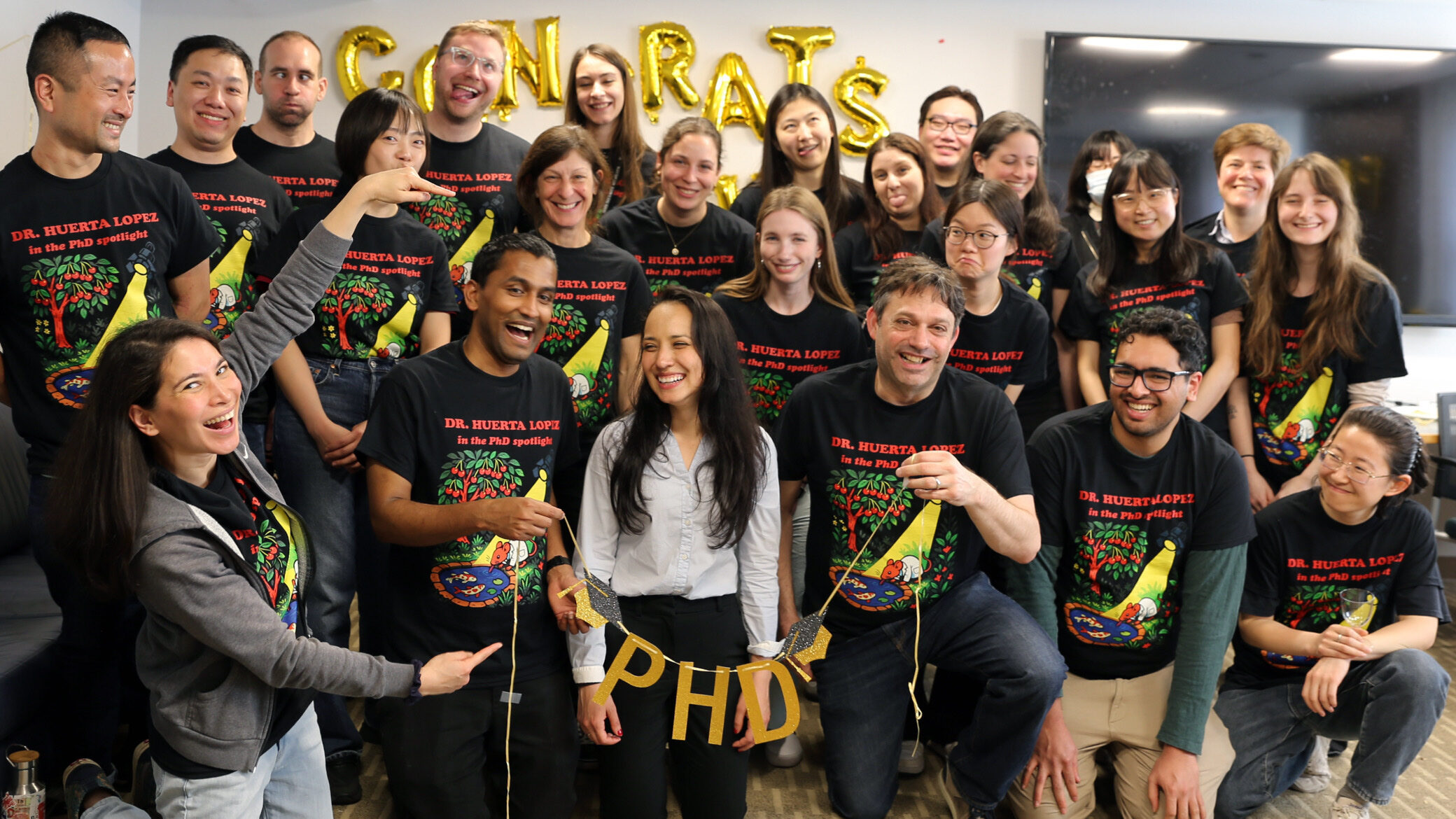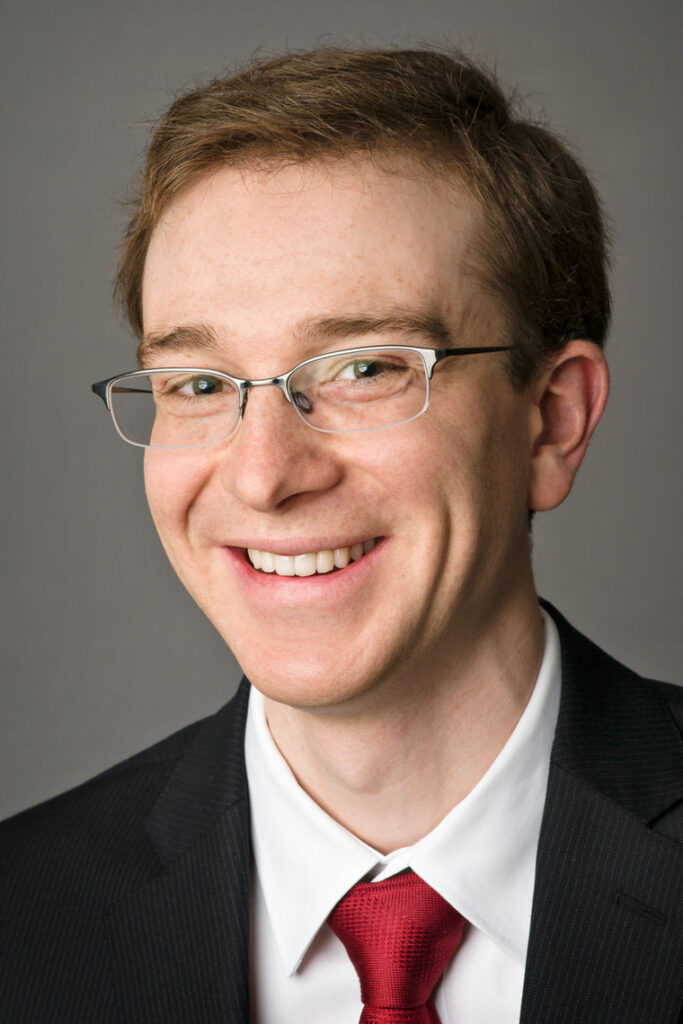- Fellow Highlights
Q&A: Valentin Bolotnyy and Fellow Harvard and MIT Graduate Students Create Map of Doctors Impacted by Immigration Executive Order

After President Trump released his first executive order on immigration, Valentin Bolotnyy (2013 Fellow) and several of his colleagues in the Harvard and MIT economics departments started thinking about how they could respond. As students of economics they wanted to help educate the public on the economic and social impact of the ban. They decided to look at US doctors who are from the countries included in the executive order. Once they had the data, they created an interactive map, which has information on where in the US doctors with training from the six affected countries practice medicine. The website went live after President Trump released the second executive order.
Valentin and the team found that more than 7,000 doctors who trained in Iran, Libya, Somalia, Sudan, Syria, and Yemen are currently working in the US, and they provide an estimated 14 million appointments to patients each year. Interestingly, the Rust Belt and Appalachia are among the areas with the highest concentration of doctors from these countries.
Valentin was born to Jewish parents in Ukraine who opted for refugee status in the United States when Valentin was eight. When his family was caught in the economic crisis of 2008 in the US, Valentin’s budding interest in economic analysis became his scholarly passion. He is now a PhD student in economics at Harvard.
We chatted with Valentin after the website launched.

There are so many professions touched by immigrants. How did you decide to focus on doctors?
We knew anecdotally of hospitals in rural areas sponsoring visas for foreign doctors because of a shortage of American doctors wanting to work there. And it made sense from an economics standpoint that foreign doctors would be the ones helping fill these shortages, in the same way that immigrants fill shortages in Silicon Valley and in our fruit fields. When we started working with the data, it became apparent that rural areas rely on doctors from the six banned countries the most. We wanted to start a conversation about the importance of immigrants to rural America and the related negative consequences of the executive order. The case of immigrant doctors seemed like a clear example of that.
Without getting into too much detail, how did you figure out the number of doctors from impacted countries in each area of the US?
We used data from Doximity, a professional network that has information on virtually all physicians working in the US. The data allowed us to figure out the number and concentration of doctors from the banned countries in each area of the US. We used academic work to estimate the number of appointments these doctors were providing each year. We worked off of the Health Professional Shortage Area (HPSA) designations made by the federal government to estimate how many of those appointments are provided in areas with doctor shortages.
The initiative has already generated a great deal of attention. What do you hope the main takeaway might be for someone learning about the findings?
We hope that our work makes the negative consequences of the executive order a part of the conversation about its merits, especially for those who currently support it. The order claims to make us safer, but the data suggest that it does not and in fact makes us less healthy. We also hope that our work provides a sense of scale for the service that immigrants provide to our communities every day.
Will there be more studies on tangential topics from you and this group?
We are motivated by a desire for the American public to evaluate policies in a way that fully appreciates their consequences. If we see an opportunity to do more work of this type, we’ll certainly take it on.
How can Fellows help you?
PD Soros Fellows, with many doctors among them, have been a constant reminder of why immigrants from all countries are so crucial to America’s prosperity and have kept us working hard on this project. Anything the Fellows can do to help us convey our findings to communities most affected by the ban would be terrific. If they have stories they are willing to share related to the immigration ban, we are collecting them right now on our website and plan to use them to help illustrate our conclusions. And if they have ideas for similar work that our team could tackle – something that would explain the local consequences of federal policies – it would be great to hear from them! ∎
Keep Exploring
-
 Read more: Kathy Ku Steps into Leadership as PDSFA Chair
Read more: Kathy Ku Steps into Leadership as PDSFA Chair- Board of Directors
- Fellowship News
Kathy Ku Steps into Leadership as PDSFA Chair
-
 Read more: Q&A with MD/PhD Student Silvia Huerta Lopez
Read more: Q&A with MD/PhD Student Silvia Huerta LopezQ&A with MD/PhD Student Silvia Huerta Lopez
-
 Read more: PD Soros Eligibility Guide for PhD Applicants
Read more: PD Soros Eligibility Guide for PhD Applicants- Applicant Information
PD Soros Eligibility Guide for PhD Applicants
-
 Read more: Watch: Optional Exhibits & Recommendations
Read more: Watch: Optional Exhibits & Recommendations- 2025 Information Sessions
Watch: Optional Exhibits & Recommendations
